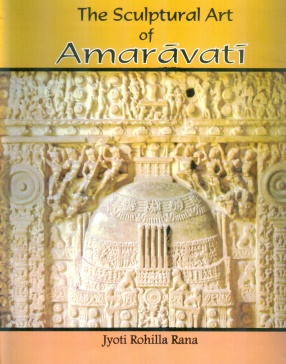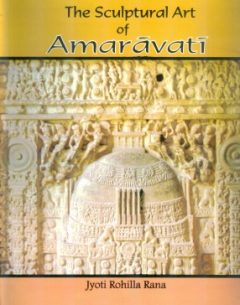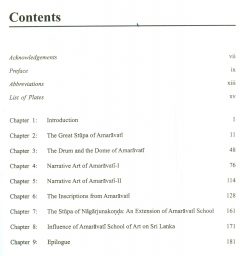The book The Sculptural Art of Amaravati, is an innovative study of the sculptures of Amaravati a centre of art activities and a pilgrimage centre, which promoted the glory of Indian Buddhism in the south. The book gives an introduction to Amaravati, its geographical setting, historical and political background of the Satavahanas and Iksvakus followed by the discovery of Maha Caitya and the site existing today. While comparing other stupas of northern India (e.g. Bharhut and Sanci) the stupa and its architecture in Andhradesa is discussed in terms of evolution and changes in style and structure emphasizing stylistic differences and material and technique used in the sculptural representation. The development of the railing and its different parts, i.e. pillars (stambha) crossbars (suci) and coping (usnisa) has been dealt upon in addition to describing the drum, drum slab, drum pilasters, dome slabs (ayaka-patta) and frieze gate, circumambulatory path (pradaksina patha) and ayaka-khamba.
The narrative art of Amaravati is illustrated with the depiction of Jatakas, i.e. the stories associated with the previous births of the Buddha, depiction of avadanas and scenes from the life of Buddha-comparing the differences of depicting narratives at other Buddhist sites in India. The inscriptions at Amaravati reflect the socio-economic and cultural status of the society of that time and also help to know about the variety of donors who contributed in making of the stupa. The influence of Amaravati style on the sculptures led to further expansion to other areas within the boundaries as well as beyond it. The stupa of Nagarjunakonda and extension of Amaravati school, is discussed with a view to highlight the influence of Amaravati School on its art and also in the art of Sri Lanka. In case of the latter the metal images of Buddha have exhibited their indigenous features combined with the influences from the Amaravati School. The book at the end presents the salient features of the research in respect to architectural history and symbolism of Amaravati stupa that existed before and after the maha-caitya.








There are no reviews yet.